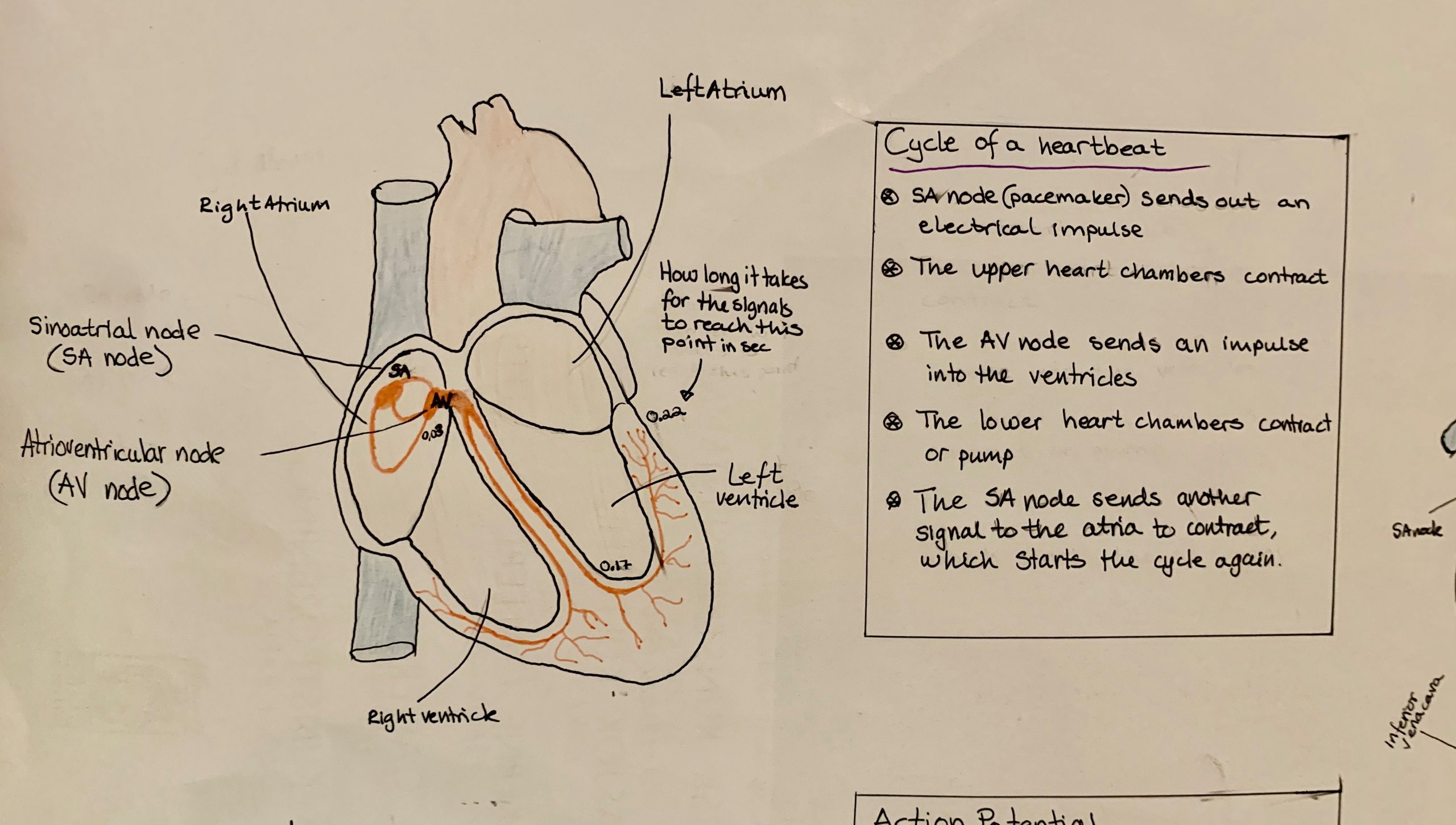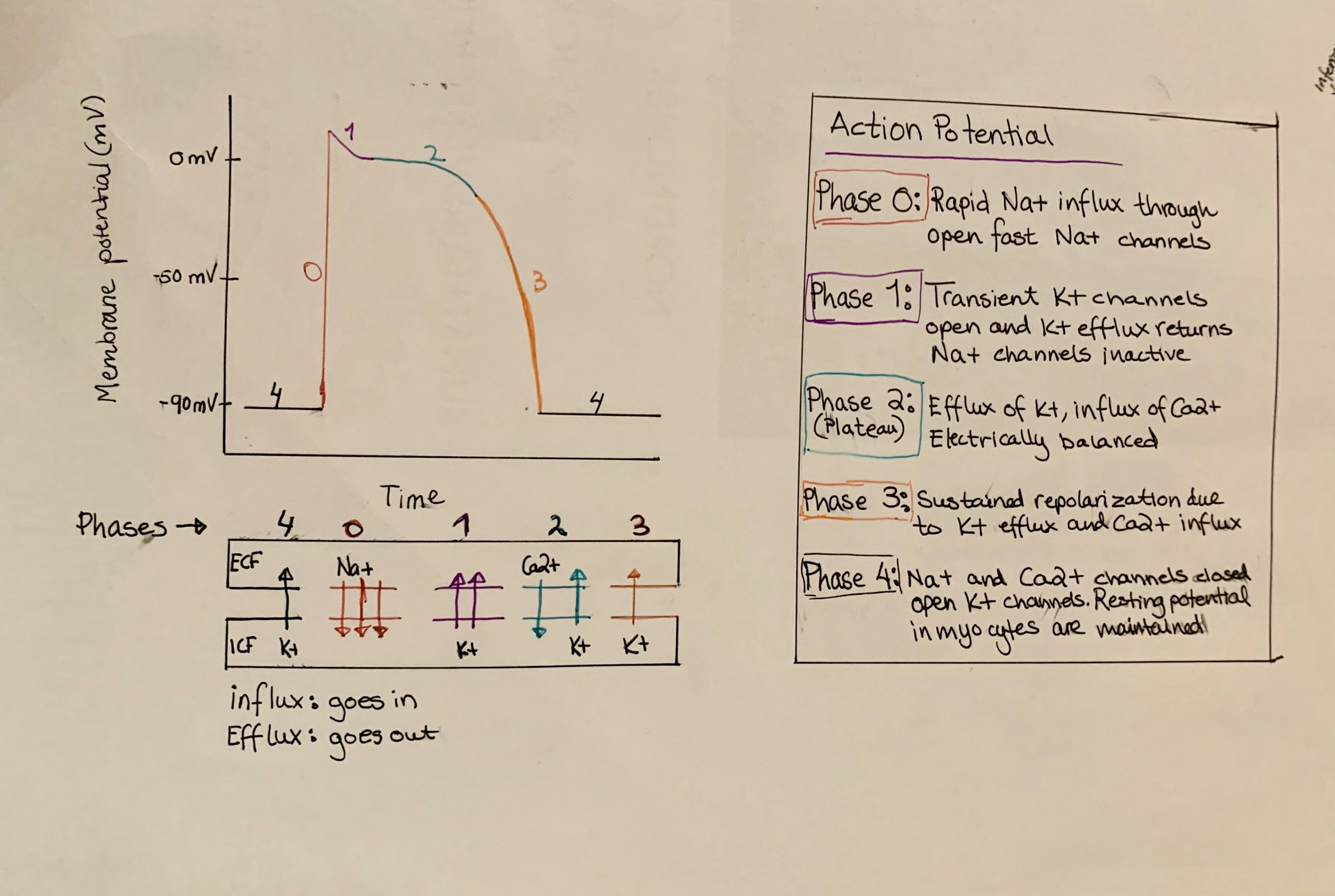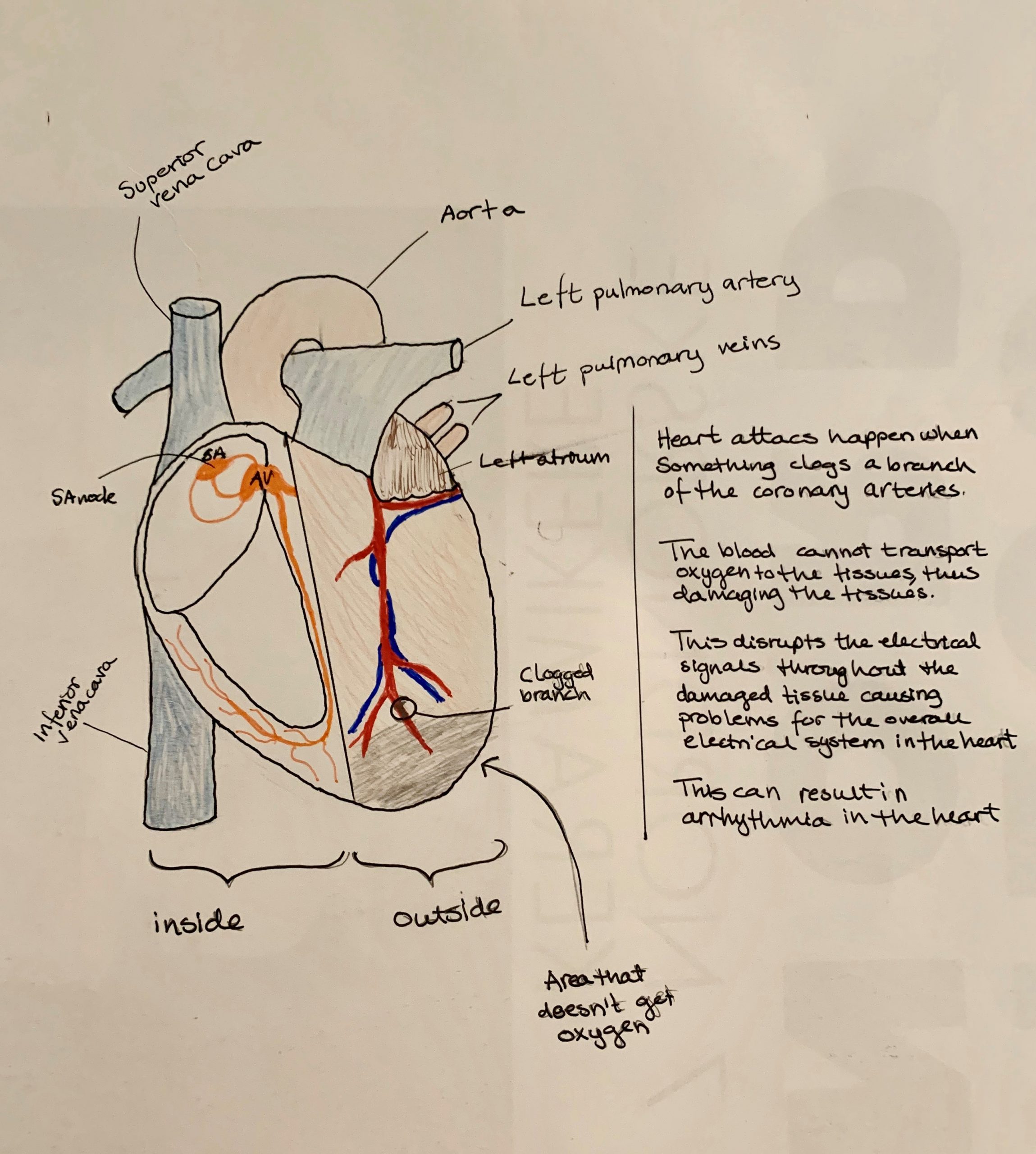My project is on the cardiovascular and circulatory system. I did a poster on how the electrical signals goes through the heart and from where it begins. The cardiac action potential is involved in this process of engaging the start for the electrical signal from the SA node. Arrhythmia is a disease where the heart rhythm is irregular, and a heart attack is when blood and oxygen can’t be transported through the arteries due to a blockage damaging the tissues.





Hi Kaia,
I think you have a very interesting and exciting project going for you here and the poster looks great!
The cardiac action potential is generated by ion channels resulting in normal sequence and synchronous contraction of the atria and ventricles. An activation mechanism must enable rapid changes in heart rate and respond to the changes in autonomic tone (Grant, 2009). The action potential of pacemaker cells in the sinoatrial (SA) and atrioventricular (AV) nodes are different from those in working myocardium (Zlochiver et al, 2019). The membrane potential is more depolarized, undergoes slow diastolic depolarization, and gradually merges into phase 0 which is central to rapid propagation of the cardiac impulse (Grant, 2009).
Ion channels reduce the activation energy required for an ion movement across the lipophilic cell membrane. An action potential causes a change in the permeability of ion channels and each ion moves passively down its electro-chemical gradients to change the membrane potential of the cell (Zlochiver et al, 2019). The electrochemical gradient determines whether an ion moves into or out of a cell and homeostasis is maintained by active transport processes which is linked directly or indirectly to ATP hydrolysis (Grant, 2009).
Arrhythmia is a disease where the heart rhythm is irregular because of electrical impulses that coordinate the heartbeats not working as they should (Setiawan, 2011). Doctors classify arrhythmias by where they originate and by the speed of heart rate. Tachycardia refers to fast heartbeat and bradycardia refers to a slow heartbeat and noticeable symptoms may include fluttering in your chest, racing or slow heartbeat, chest pain and shortness of breath (Setiawan 2011). Other, less noticeable symptoms may include anxiety, fatigue, lightheadedness, or dizziness, sweating and fainting tendencies
Grant, A.O. (2009) Cardiac Ion Channels, Circulation: Arrhythmia and Electrophysiology, 2:185-194 https://doi.org/10.1161/CIRCEP.108.789081
Setiawan, I. A. M., Imah, E. M., and Jatmiko, W., (2011)”Arrhytmia classification using Fuzzy-Neuro Generalized Learning Vector Quantization,” 2011 International Conference on Advanced Computer Science and Information Systems, pp. 385-390.
Zlochiver, et al. (2019) Abstract 502: Reversible Cardiac Action Potential Recordings to Track Cellular Electrophysiology Over Days, Circulation Research, 125;A502 https://doi.org/10.1161/res.125.suppl_1.502